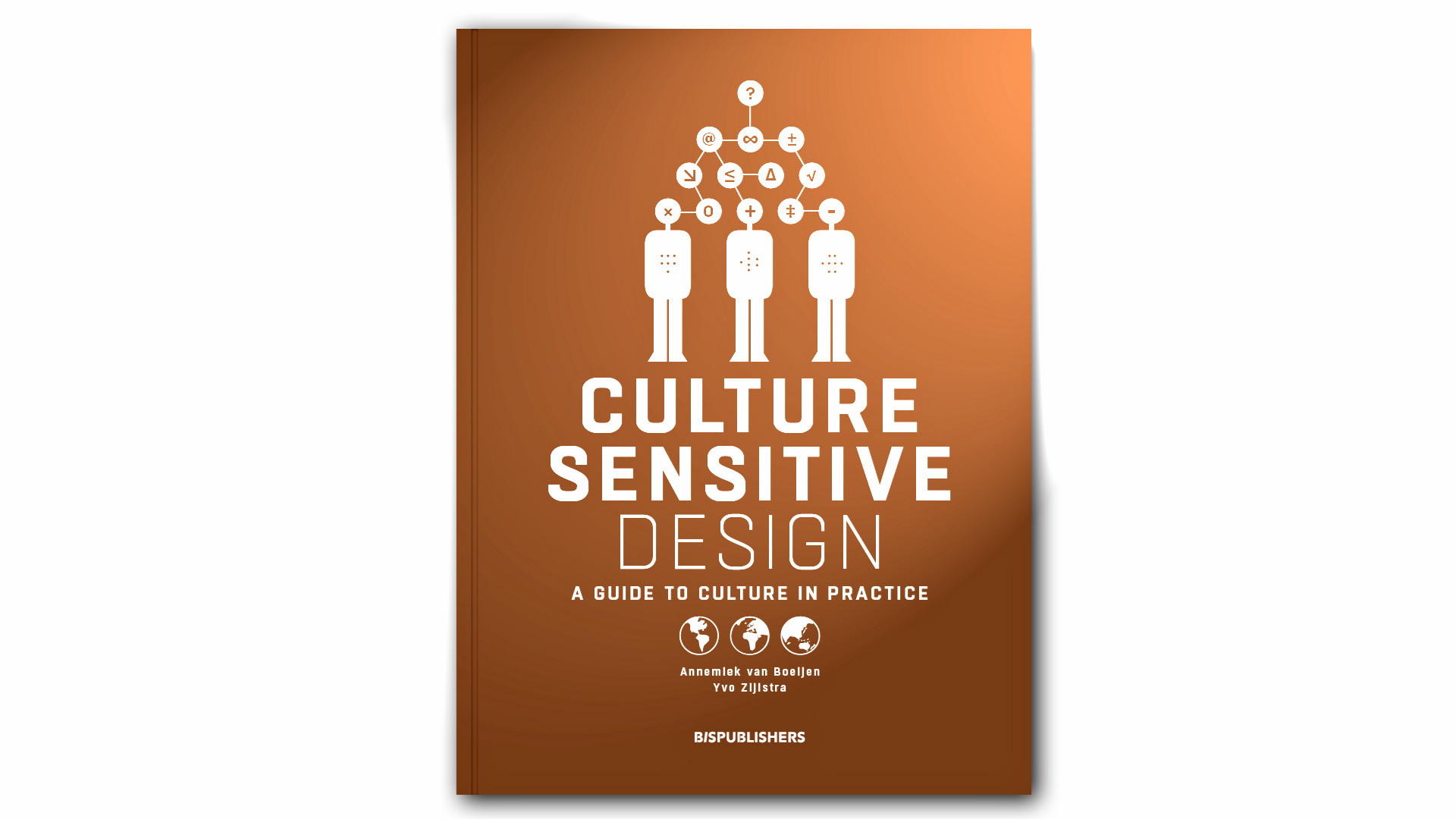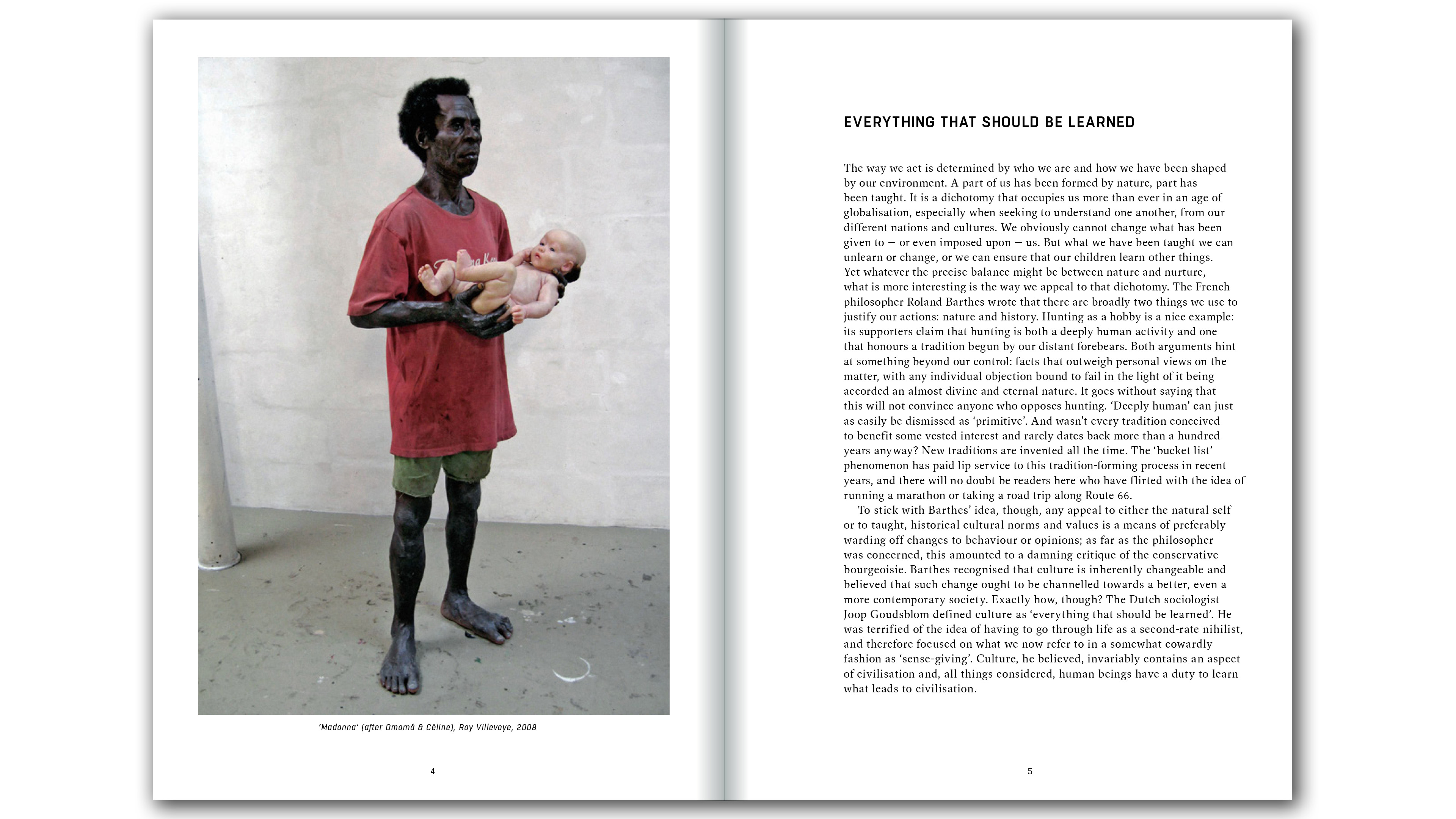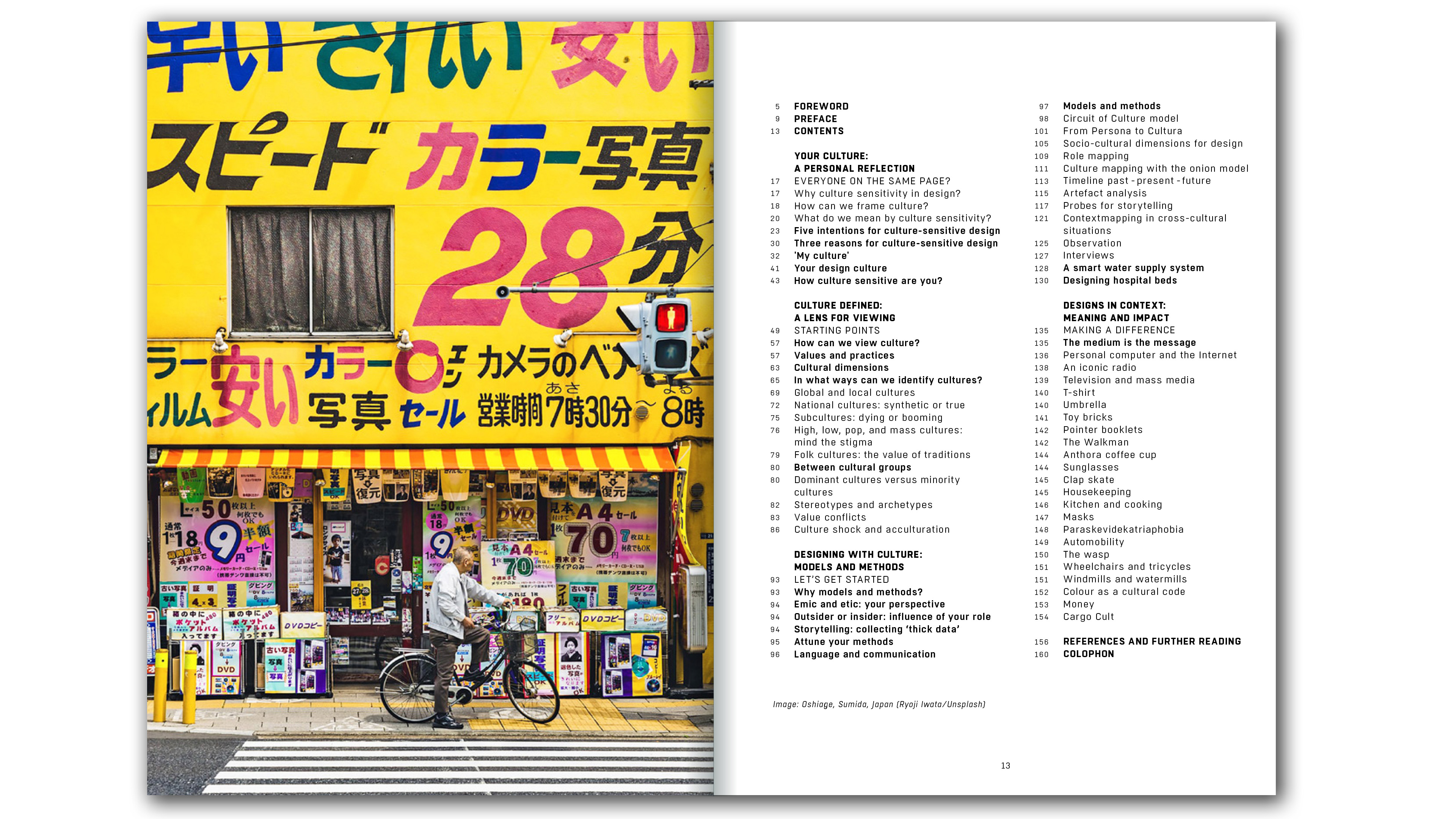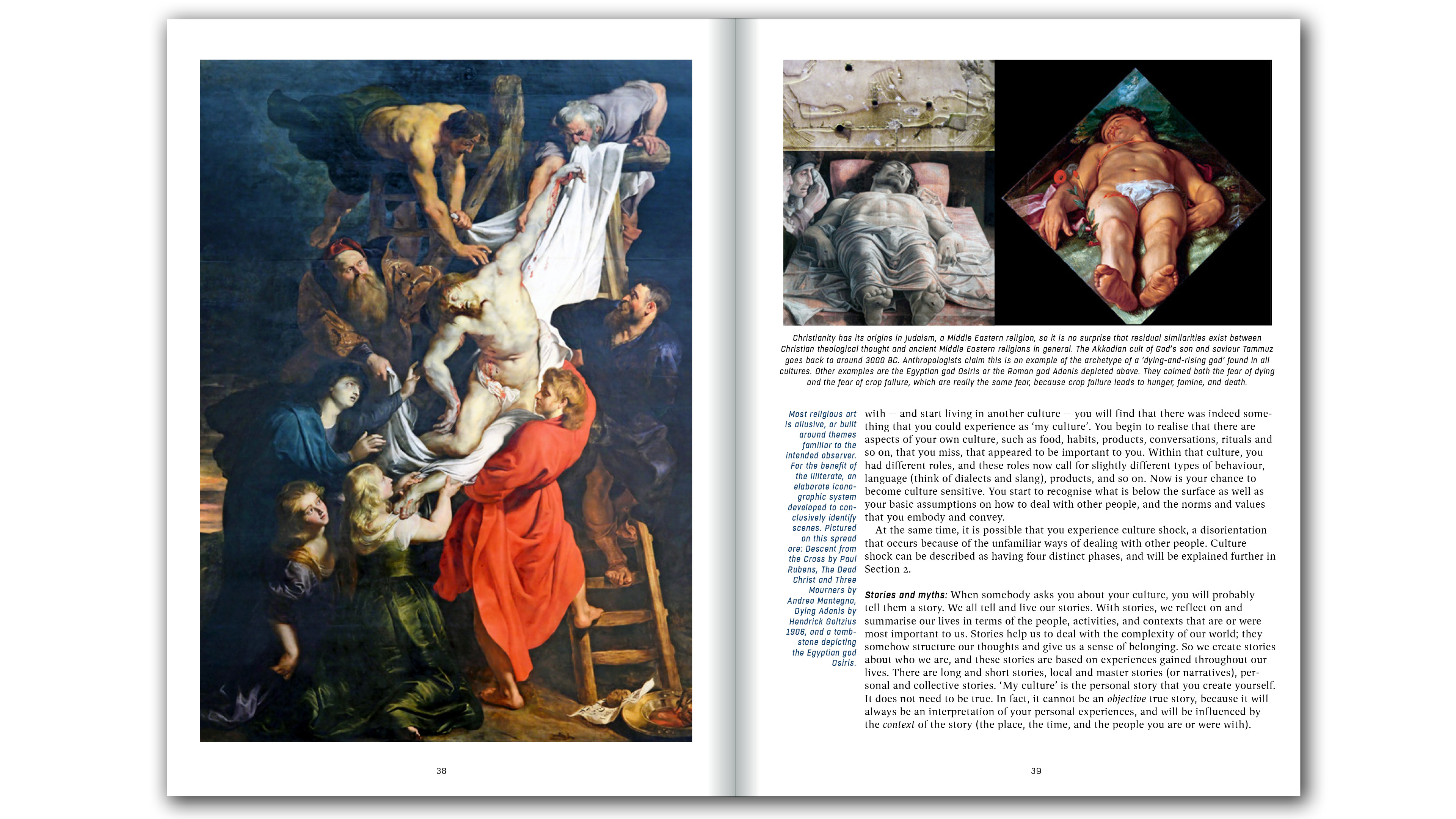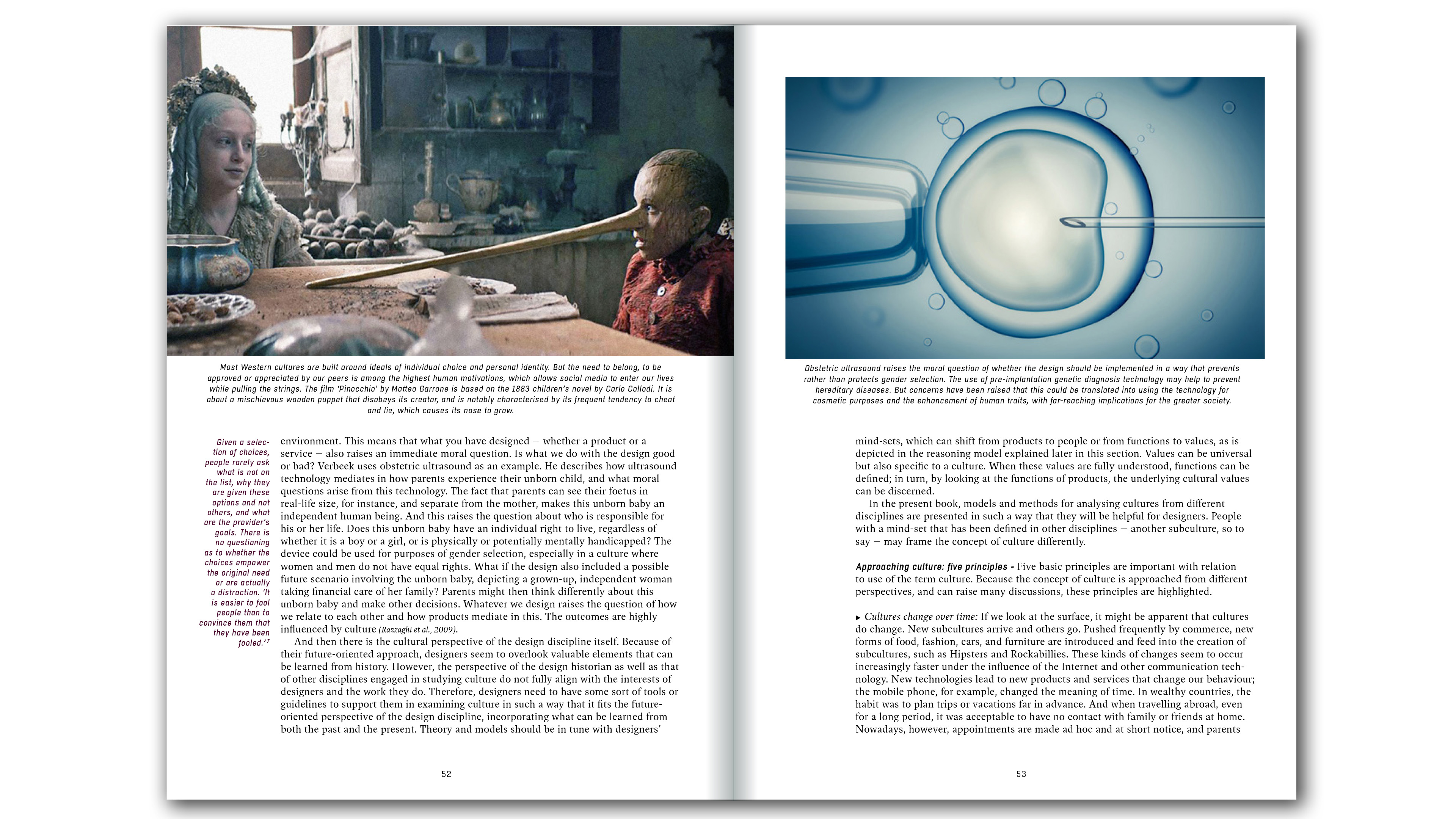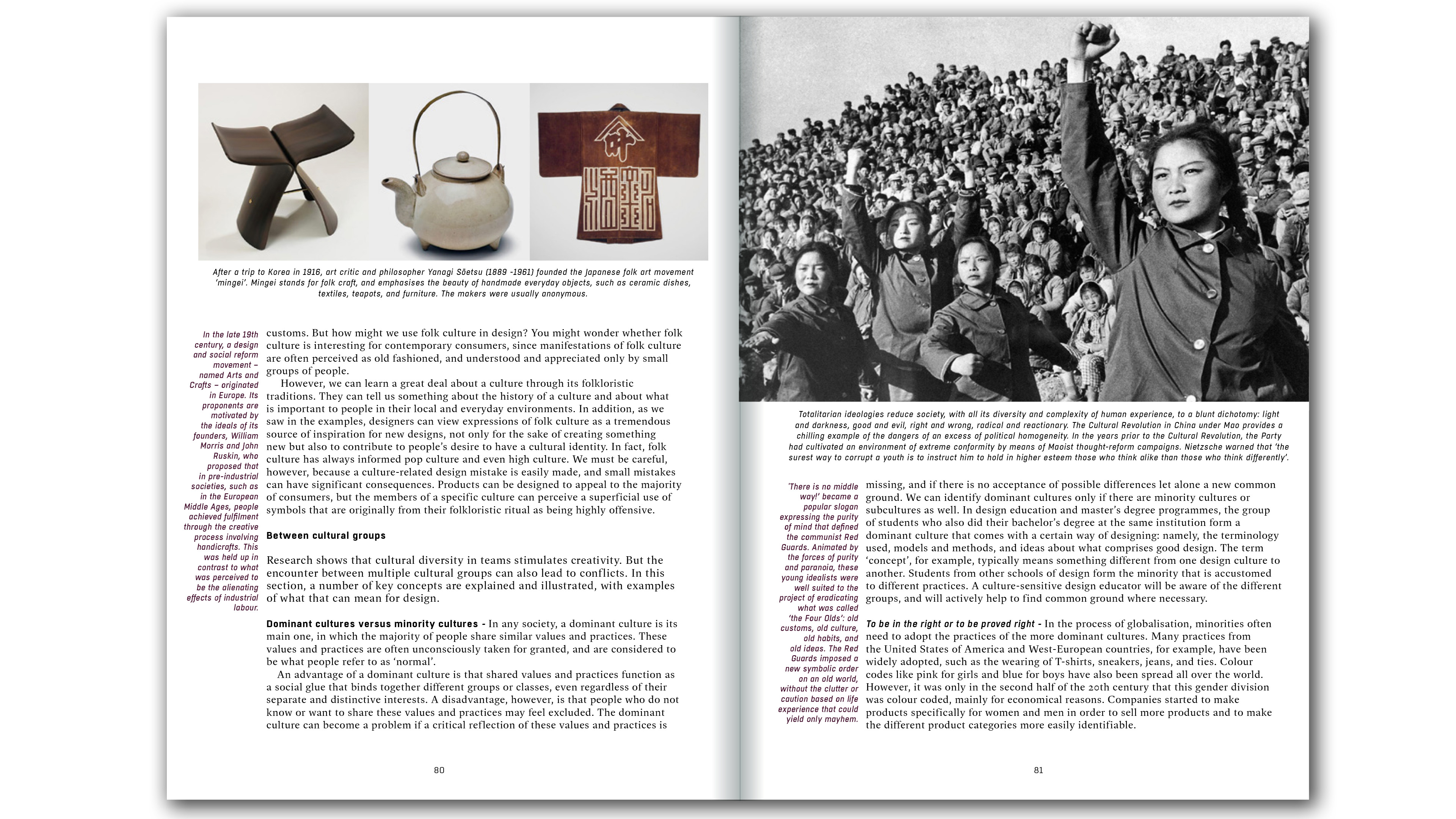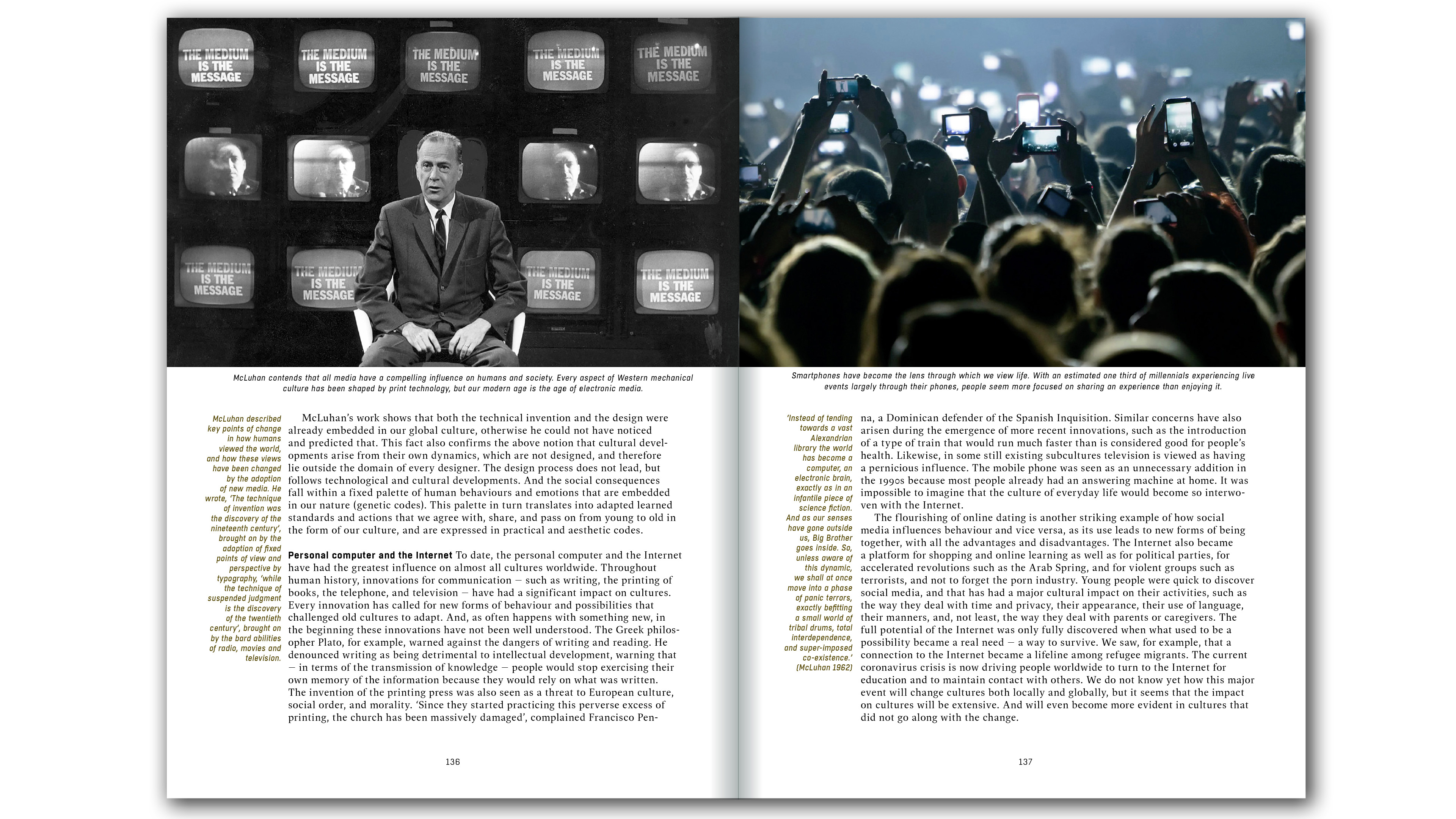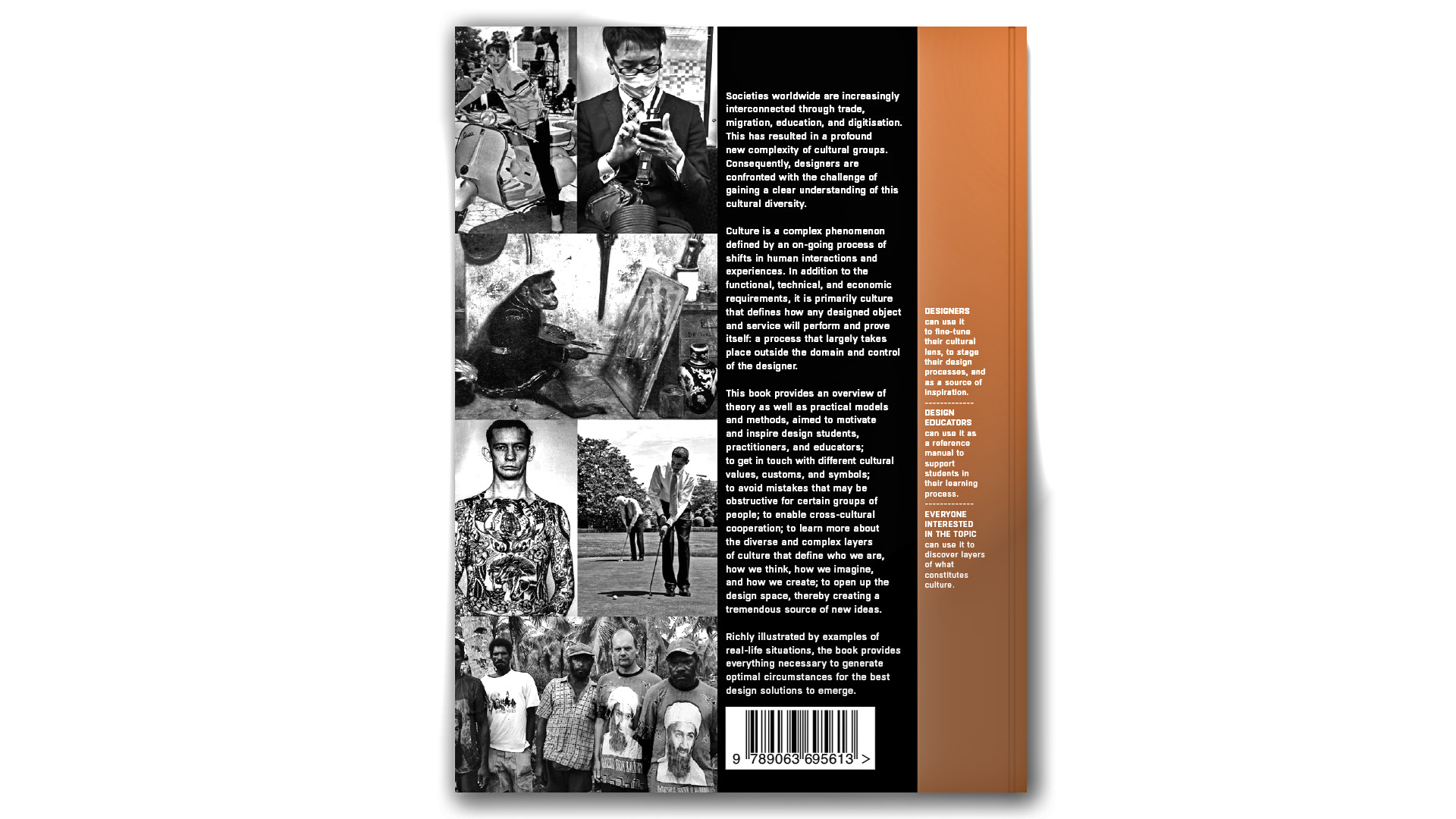Two activities distinguish humans from other animals: we define our identities by way of cultural signifiers and use heat or fire to prepare our food. Making tools, trading, teaching, playing competitive games, and watching television, for example, are activities that both humans and animals have in common.
We first need to define the concept of culture as used in this book. Culture is a collective term that consists essentially of norms and guidelines applying to social behaviour, language use, and manners that comprise the organisation of a society. Mythology, philosophy, literature, and science form the intangible, cultural heritage of a society. Material culture includes technology, architecture, and art. Design practice focuses mainly on this material culture, but no design can be viewed in isolation from the entire cultural context.
